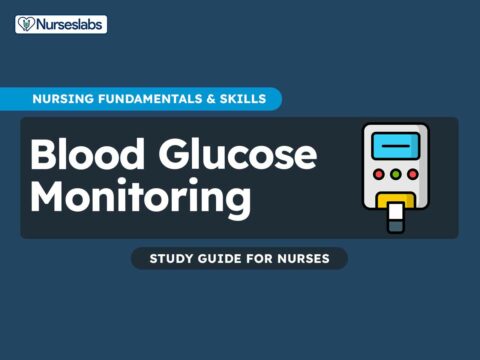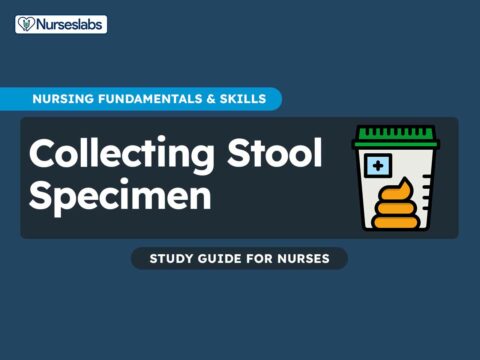Measuring central venous pressure (CVP) is a critical procedure in nursing, providing valuable insights into a patient’s cardiovascular status. This measurement helps evaluate the effectiveness of fluid therapy, assess cardiac function, and monitor for potential complications such as heart failure. Accurate CVP readings are essential for guiding treatment decisions in critically ill patients, ensuring they receive appropriate interventions.
What is Central Venous Pressure (CVP)?
Central venous pressure (CVP) Central Venous Pressure (CVP) is a measurement of the pressure in the thoracic vena cava, near the right atrium of the heart. It reflects the amount of blood returning to the heart and the heart’s ability to pump the blood into the arterial system. CVP is an important clinical parameter used to assess a patient’s fluid status, guide fluid management, and evaluate cardiac function, particularly the right side of the heart. By providing insights into venous return and right atrial pressure, CVP helps healthcare providers make informed decisions about fluid administration, vasopressor support, and other therapeutic interventions in critically ill patients.
Normal Central Venous Pressure Readings
Normal CVP readings typically fall within the range of 2 to 8 mmHg when measured at the end of expiration in a supine patient. However, it’s important to recognize that individual variations and clinical contexts may influence CVP values. Here’s a breakdown of normal CVP readings:
- 2 to 6 mmHg. This range is often considered physiologically normal for most patients and reflects adequate venous return to the heart. In healthy individuals, CVP tends to be lower during inspiration and slightly higher during expiration due to changes in intrathoracic pressure.
- 6 to 8 mmHg. While still within the normal range, CVP readings at the upper end may indicate a slightly increased preload or volume status. This can occur in conditions such as dehydration or early fluid overload.
Abnormal Central Venous Pressure Readings
Abnormal CVP readings can signify underlying cardiovascular or fluid balance disturbances and may warrant further assessment and intervention. Here are some examples of abnormal CVP readings and their potential implications:
- < 2 mmHg. A CVP below the lower limit of normal may indicate hypovolemia or reduced venous return to the heart. This can occur in conditions such as hemorrhage, severe dehydration, or distributive shock (e.g., septic shock).
- 8 mmHg. Elevated CVP readings beyond the upper limit of normal may suggest volume overload or impaired cardiac function. Causes of elevated CVP include heart failure, fluid overload (e.g., renal failure, excessive fluid resuscitation), pulmonary hypertension, or right-sided heart dysfunction.
- Fluctuating or Unstable Readings. Rapid fluctuations or unstable CVP readings may indicate hemodynamic instability or ongoing changes in fluid status. This can occur in conditions such as sepsis, acute myocardial infarction, or severe trauma.
Purpose of Measuring Central Venous Pressure (CVP)
The following are the purposes of measuring central venous pressure (CVP):
1. Assessing Fluid Status
CVP measurement helps determine whether a patient is hypovolemic (low blood volume), euvolemic (normal blood volume), or hypervolemic (excess blood volume). This assessment is critical for guiding fluid resuscitation and avoiding complications related to fluid overload or deficit.
2. Evaluating Cardiac Function
CVP provides insights into right ventricular function and venous return. High CVP readings can indicate right heart failure or volume overload, while low readings may suggest hypovolemia or reduced venous return. This information is vital for diagnosing and managing cardiac conditions.
3. Guiding Fluid Therapy
By monitoring CVP, healthcare providers can tailor fluid administration to meet the patient’s needs. This is particularly important in critical care settings where precise fluid management is necessary to maintain hemodynamic stability.
4. Monitoring the Effectiveness of Treatments
CVP readings help evaluate the response to interventions such as diuretics, vasopressors, and inotropes. Changes in CVP can indicate whether these treatments are effectively managing the patient’s fluid status and cardiac function.
5. Detecting Complications Early
Regular monitoring of CVP can help detect complications such as cardiac tamponade, pulmonary embolism, or tension pneumothorax early. Prompt identification of these conditions allows for timely intervention and improved patient outcomes.
6. Facilitating Hemodynamic Stability
Maintaining an optimal CVP is important for ensuring adequate perfusion and oxygen delivery to tissues. CVP measurement aids in maintaining hemodynamic stability, particularly in critically ill patients who require close monitoring.
Objectives
Here are the objectives of measuring central venous pressure (CVP):
1. To Serve as a Guide for Fluid Replacement in Seriously Ill Patients. CVP measurements help determine the appropriate volume of fluids required for resuscitation and ongoing maintenance in critically ill patients. By providing a real-time assessment of a patient’s fluid status, CVP guides the administration of intravenous fluids to avoid both hypovolemia and fluid overload.
2. To Estimate Blood Volume Deficits. CVP is used to assess the severity of blood volume deficits, which is crucial for diagnosing and treating conditions like dehydration, hemorrhage, or shock. Accurate estimation of blood volume helps in the prompt and effective management of fluid replacement therapies.
3. To Determine Pressures in the Right Atrium and Central Veins. CVP measurement provides direct information about the pressures within the right atrium and the central venous system. These readings are essential for evaluating the function of the right side of the heart and venous return, which can impact overall cardiovascular performance.
4. To Evaluate for Circulatory Failure. By integrating CVP measurements with the patient’s total clinical picture, healthcare providers can assess for signs of circulatory failure. High or low CVP readings, when combined with other clinical data, help identify conditions such as heart failure, sepsis, or significant blood loss, facilitating timely intervention.
5. To Monitor the Effectiveness of Treatment Interventions. Regular monitoring of CVP allows healthcare providers to evaluate the effectiveness of therapeutic interventions, such as the use of diuretics, vasopressors, or inotropic agents. Changes in CVP readings provide feedback on whether these treatments are improving the patient’s hemodynamic status.
6. To Detect Potential Complications Early. Continuous CVP monitoring can help in the early detection of complications such as cardiac tamponade, pulmonary embolism, or tension pneumothorax. Early identification of these issues enables prompt treatment, potentially reducing morbidity and mortality.
Indications
The following are the indications for measuring central venous pressure (CVP):
1. Assessment of Fluid Status. CVP measurement is indicated in patients with suspected fluid imbalance, whether due to dehydration, blood loss, or fluid overload. It helps determine the need for fluid resuscitation or diuretic therapy by providing a direct measurement of venous pressure and guiding fluid management decisions.
2. Monitoring in Critically Ill Patients. In intensive care units, CVP is routinely measured in critically ill patients to monitor their hemodynamic status. This includes patients with sepsis, shock, major trauma, or undergoing major surgery. CVP helps in assessing the response to treatments and interventions, ensuring optimal patient care.
3. Evaluation of Cardiac Function. CVP provides valuable information about the function of the right side of the heart and venous return. It is particularly useful in patients with heart failure, pulmonary hypertension, or other cardiac conditions where right ventricular function needs to be closely monitored.
4. Guidance for Intravenous Fluid Therapy. Accurate CVP readings are crucial for guiding intravenous fluid therapy in patients who require precise fluid management, such as those with renal failure, burns, or undergoing major surgical procedures. It helps in maintaining the right balance of fluids, avoiding complications related to overhydration or dehydration.
5. Diagnosis and Management of Circulatory Shock. CVP measurement is essential in diagnosing and managing various forms of circulatory shock, including hypovolemic, cardiogenic, and septic shock. By assessing venous pressure, healthcare providers can determine the underlying cause of shock and implement appropriate therapeutic measures.
6. Monitoring for Potential Complications. CVP is used to monitor patients at risk of developing complications such as cardiac tamponade, tension pneumothorax, or pulmonary embolism. Continuous CVP monitoring allows for early detection and timely intervention, potentially improving patient outcomes.
7. Postoperative Monitoring. After major surgical procedures, particularly those involving the heart or major blood vessels, CVP measurement is critical for monitoring the patient’s recovery and ensuring stable hemodynamic status. It helps detect any postoperative complications early and guides the management of fluid therapy.
Nursing Alert: Nursing Alert: Do not rely solely on CVP measurements for clinical decision-making. Use CVP readings in conjunction with other assessment data to obtain a comprehensive understanding of the patient’s hemodynamic status. Always report any abnormal CVP findings to the physician promptly.
Equipment
To accurately measure CVP, a specific set of equipment is required to ensure precision and safety during the procedure. The following items are essential for performing CVP measurements effectively:
1. Venous Pressure Tray. This tray contains the necessary instruments and supplies for CVP measurement, including sterile drapes, gauze, syringes, and antiseptic solutions. It ensures that all required items are readily available and organized.
2. Cut-down Tray. A cut-down tray is used if a central venous catheter needs to be inserted surgically. It contains scalpels, forceps, sutures, and other surgical tools required for accessing a central vein.
3. Infusion Solution and Infusion Set. An infusion solution (such as normal saline) and an infusion set are used to maintain patency of the central venous catheter and provide a continuous flow of fluid for pressure measurement.
4. 3-way or 4-way Stopcock (or Pressure Transducer). A stopcock is used to control the flow of fluids and facilitate the connection of the pressure monitoring system to the central venous catheter. Alternatively, a pressure transducer can be used to convert the pressure readings into electronic signals for display on a monitor.
5. IV Pole Attached to Bed. The IV pole supports the infusion solution and ensures it is positioned correctly for gravity flow into the central venous catheter.
6. Arm Board. An arm board is used to secure the patient’s arm and maintain a stable position during the procedure, which helps in accurate measurement and reduces the risk of catheter displacement.
7. Adhesive Tape. Adhesive tape is used to secure the catheter, IV lines, and pressure monitoring equipment in place, ensuring they do not shift during the procedure.
8. ECG Monitor. An ECG monitor is used to continuously monitor the patient’s cardiac rhythm and detect any arrhythmias or changes in heart rate that may occur during the CVP measurement.
9. Carpenter’s Level (for Establishing Zero Point). A carpenter’s level is used to establish the zero reference point for pressure measurement. It ensures that the pressure readings are accurate by leveling the transducer or manometer at the right atrium’s level.
Nursing Interventions Before Measuring Central Venous Pressure (CVP)
The following nursing interventions, along with their rationale, are essential before measuring CVP:
1. Assemble equipment according to manufacturer’s directions.
Ensuring that all equipment is properly assembled according to the manufacturer’s instructions minimizes the risk of equipment malfunction and ensures the accuracy of the CVP measurements.
2. Explain the procedure to the patient.
Informing the patient that the procedure is similar to an IV insertion helps to alleviate anxiety and gain cooperation. Assuring the patient that they can move in bed after the catheter is placed provides comfort and reduces movement during the procedure, which can affect the accuracy of readings.
3. Place the patient in a position of comfort.
Positioning the patient comfortably is essential for establishing a baseline position for subsequent readings. Consistency in patient positioning ensures that CVP measurements are comparable over time.
4. Attach manometer to the IV pole.
Properly attaching the manometer to the IV pole and aligning the zero point with the patient’s right atrium ensures accurate measurement of venous pressure. Incorrect positioning can lead to erroneous readings.
5. Mark the midaxillary line on the patient.
Marking the midaxillary line with an indelible pencil helps to consistently locate the correct anatomical reference point for CVP measurement. This ensures that the zero point of the manometer is accurately aligned.
6. Connect the CVP catheter to a 3-way stopcock.
Connecting the CVP catheter to a 3-way stopcock allows for controlled fluid flow and accurate measurement. The stopcock facilitates the connection between the IV line, manometer, and the patient.
7. Start the IV flow and fill the manometer.
Starting the IV flow and filling the manometer to a level above the anticipated reading ensures that the system is primed and ready for accurate pressure measurement. This step also helps to eliminate air bubbles that can affect readings.
8. Surgically cleanse the CVP site.
Surgical cleansing of the CVP insertion site reduces the risk of infection. Maintaining aseptic technique is critical for patient safety and preventing complications.
9. Assist the physician with catheter insertion.
The physician introduces the CVP catheter percutaneously or via direct venous cutdown. Monitoring for an inspiratory fall and expiratory rise in venous pressure confirms proper catheter placement. The nurse’s role is to assist and ensure sterile technique is maintained throughout the procedure.
10. Monitor the patient by ECG during catheter insertion.
Continuous ECG monitoring during catheter insertion helps detect arrhythmias or other cardiac issues that may arise. This ensures immediate response to any complications.
11. Secure the catheter and apply a sterile dressing.
Suturing and taping the catheter in place, followed by applying a sterile dressing, helps to prevent displacement and infection. A securely placed catheter ensures accurate and consistent CVP readings.
12. Adjust the infusion to a slow continuous drip.
Adjusting the infusion to a slow continuous drip maintains catheter patency and prevents clot formation. A continuous flow of IV fluid also ensures accurate pressure readings.
Procedure in Measuring Central Venous Pressure (CVP)
The following steps outline the procedures for accurately measuring CVP, along with their rationale:
1. Place the patient in the identified position and confirm zero point.
The zero point for CVP measurement is set at the level of the right atrium, where intravascular pressures are referenced to atmospheric pressure. Confirming the zero point ensures accurate baseline measurements.
2. Position the manometer at the level of the right atrium.
Aligning the zero point of the manometer with the level of the right atrium ensures that pressure readings are referenced correctly. This step prevents errors in measurement due to differences in height.
3. Turn the stopcock to fill the manometer and patient’s veins.
Filling the manometer with IV solution allows for pressure readings to be visualized accurately. Flowing the solution into the patient’s veins ensures that the catheter is properly primed for measurement.
4. Observe the fall in the height of the manometer column.
As the solution flows into the patient’s veins, the height of the fluid column in the manometer decreases. Observing the stabilization or stoppage of fluid movement indicates the equilibrium pressure within the central venous system, representing the CVP.
5. Record the central venous pressure (CVP) and patient’s position.
Documenting the measured CVP, along with the patient’s position, provides essential data for ongoing patient monitoring and clinical decision-making. Changes in position may affect CVP readings and must be noted for accurate interpretation.
6. Assess the patient’s clinical condition.
Interpreting CVP measurements within the context of the patient’s clinical condition is crucial for identifying fluid volume status and cardiac function. Frequent monitoring of CVP helps detect changes that may indicate hypovolemia, hypervolemia, or cardiac dysfunction.
7. Turn the stopcock to allow IV solution flow into the patient’s veins.
After completing CVP measurement, restoring IV fluid flow ensures ongoing hydration and medication delivery to the patient. This step maintains catheter patency and prevents clot formation.
Charting
The following information should be recorded when charting CVP:
1. Location of Insertion Site. Documenting the location of the insertion site provides important information about the access point used for CVP measurement. This allows for accurate assessment of any complications related to the procedure, such as infection or hematoma formation.
2. Type and Size of Needle or Cannula Used for Insertion. Recording the type and size of the needle or cannula used for insertion ensures transparency in the procedure performed. Different sizes and types of catheters may have varying implications for patient safety and comfort, and documenting this information allows for continuity of care.
3. Time of Insertion. Documenting the time of CVP catheter insertion establishes a chronological record of the procedure. This information is crucial for monitoring trends in CVP measurements over time and assessing the patient’s response to interventions.
4. Appearance of Needle Insertion Site. Describing the appearance of the needle insertion site provides valuable data on the patient’s skin integrity and any signs of inflammation or irritation. Changes in the appearance of the site may indicate complications such as infection or tissue damage, warranting further assessment and intervention.





































Leave a Comment